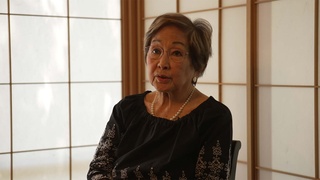Interviews
How he met his wife (Japanese)
(Japanese) I think I was in junior high school. There weren’t many students at junior high. That’s probably why she noticed me. She was also a farmer, but my mother was right when she said that the right person would come to me. She already knew. So basically, she only notices me because there weren’t many junior high students. At one time--and perhaps this was destined to happen--one of her friends used to be my next door neighbor. So (through the neighbor) I knew of this fine lady who was out there.
I*: So you had never met, or had spoken to her before?
No, no, I had not. But rumor said that she was a fine young lady, so I knew that much.
I: Did somebody recommend her as your wife? Or, for example, did you send notice to someone in Japan telling them that you’re looking for a wife?
Yes, actually 3 people sent me letters regarding 3 different ladies. I immediately picked out my wife, my destiny. It was around 1940. I went to pick her up myself from Rosario.
I: When your wife first crossed the ocean on the boat and came to Argentina, and when you were there to greet her for the first time, were you able to tell who she was? Sort of like, “She’s the one”?
Yes, I knew.
I: How did you feel?
Yes, yes... I just introduced myself to her and the person she came with, and so we did that and then parted ways with that person, and then we headed to Rosario where we had two uncles that lived there, so they took care of us there... It almost sounds like a fairytale when I look back on it... (laughs)
* ”I” indicates an interviewer.
Date: November 28, 2006
Location: Buenos Aires, Argentina
Interviewer: Takeshi Nishimura, Ricardo Hokama
Contributed by: Centro Nikkei Argentino













